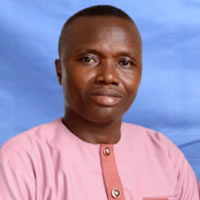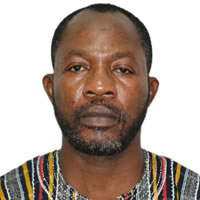Disability
Introduction
Persons with disabilities (PWDs) have been defined as those who are unable to or are restricted in the performance of specific tasks/activities due to loss of function of some part of the body as a result of impairment or malformation (Ghana Statistical Service, 2012).
In an attempt to understand the situation of PWDs as a guide for policy formulation and to help provide for their special needs, the Ghana Statistical Service, for the first time, collected information on PWDs in the 2010 Population and Housing Census. This chapter discusses the socio-economic and demographic characteristics of PWDs in Suaman District.
Population with Disability
Table 6.1 shows PWDs in the district by sex and locality of residence. From the table, there are 276 persons with various forms of disability in the district with 1.4 percent male and 1.3 percent female PWDs. The table further shows that sight (40.6%) has the highest proportion of PWDs followed by physical disability (22.8%). Persons with intellectual disability (12.0%) are least.
Type of Disability by Sex
Figure 6.1 shows disability type of Suaman district population by sex. The figure clearly shows that sight, physical, hearing and emotional follow in that order as the most common PWDs in the district.
Distribution of PWD by Type of Locality
Table 6.1 further shows that there are more PWDs in rural (197) than urban (79) household populations in the district and that 1.6 percent and 1.0 percent of rural and urban populations respectively have PWDs. The table also shows that both sight impairment (31.6%) and physical disability (31.6%) are the most common types of disability among the urban population with sight (44.2%) and hearing disability (23.9%) being the two most common types among rural households. There are more physical 38 , emotional 33 , and speech33 disabled persons in the rural areas as compared with 25, 17 and 12 in the urban areas. Also, of the 17 emotional PWDs in the urban population, 14 of them are males.
Disability and Economic Activity Status
Activity status refers to the economically active and not economically active disabled persons in the district during the reference period (the seven days preceding the census night). Economically active persons are those who worked for pay, profit or family gain, those who did not work but had jobs to return to and unemployed persons. The economically not active are persons who did not work and were not seeking for work. These include homemakers, students, retired persons, disabled and those who are unable to work due to ill-health or are too old to work.
Table 6.2 presents economic activity status of persons 15 years and older with disability by sex. The total active population of the district is 12,321 (persons 15 years and older) of which 98.1 percent have no disability with 1.9 percent having various forms of disability. Considering the disabled in the district, 64.8 percent are employed, 3.9 percent unemployed and 31.9 percent economically inactive.
A higher proportion the people with sight disability are employed as compared to other disabilities. Majority of the disabled males are employed than the female with any form of disability. A higher proportion the physically disabled (44.4%) are economically inactive.
Disability, Education and Literacy
Level of education according to the 2010 Population and Housing Census refers to the highest level of formal school that a person ever attended or is attending. The Table 6.3 shows population 3 years and older by sex, disability type and level of education in the district. The population of persons 3 years and older in the district is 18,811, out of which1.4 percent have disability.
Of those with disability, 48 percent have never attended school, 16.4 percent have attended or are attending primary school, and 14.9 percent have attended middle school. Of those attending or have attended school, more than two fifth (41.3%) have sight disability, out of which 15.3 percent have attended or are attending primary school. About 55 percent of those attending or attending school have physical disability.
Of the male population in the district who are attending/attended school, 1.5 percent have disability, out of which nearly two fifth (39.4%) have sight disability. This is followed by hearing disability (24.5%). Nearly 18 percent of those with sight disability are attending/attended primary school whereas 5.4 percent have attended/attending secondary school.
Of the females attending/attended school, 1.4 percent have disability, out of which 43.3 percent have sight disability. This is followed by physical disability (23.6%). More than one eighth (12.7%) of those with sight disability are attending/attended primary school whereas 3.6 percent are attending/attended senior high school.
Date Created : 11/18/2017 12:55:19 PM





 facebook
facebook twitter
twitter Youtube
Youtube TOLL FREE 0800 430 430
TOLL FREE 0800 430 430 +233 593 831 280
+233 593 831 280 GPS: GE-231-4383
GPS: GE-231-4383 info@ghanadistricts.com
info@ghanadistricts.com Box GP1044, Accra, Ghana
Box GP1044, Accra, Ghana